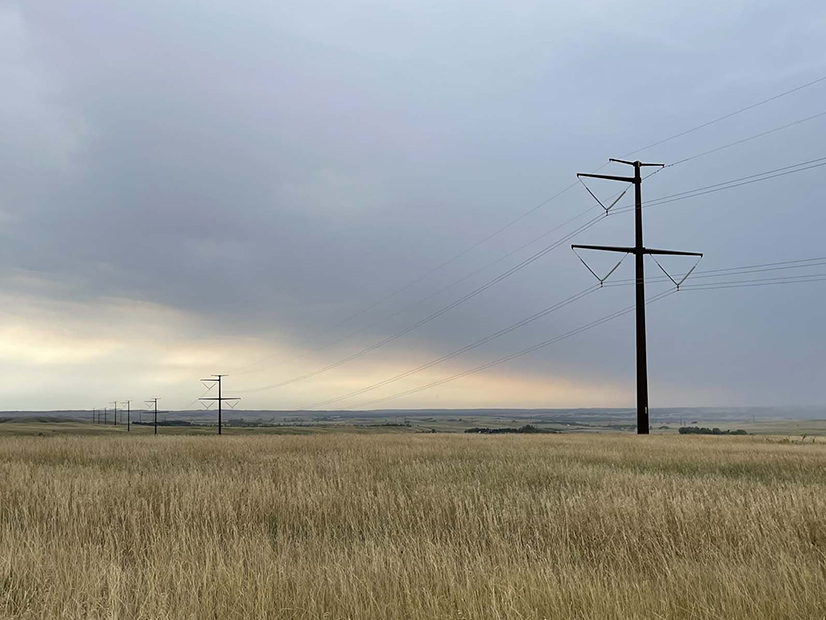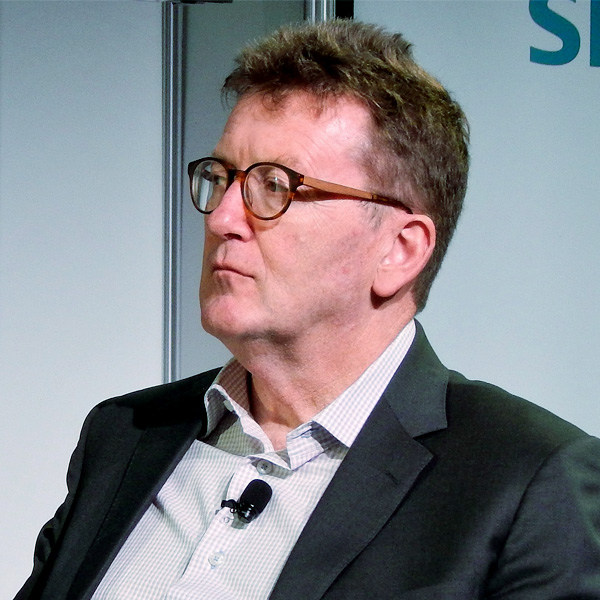
Four years ago, transmission developer Michael Skelly was on the outside of the electric industry looking in.
Clean Line Energy Partners, the company he had founded to deliver renewable energy over HVDC transmission lines, had sold off its portfolio of projects and closed its doors. Having taken a senior adviser’s role at Lazard Asset Management, Skelly was invited to speak at the American Wind Energy Association’s WINDPOWER 2019 conference. He said that while Clean Line hadn’t been able to “win the World Cup of transmission,” he was hopeful that “the second mouse gets the cheese in the transmission world.” (See Out of the Game, Skelly Still High on Wind Energy.)
 Michael Skelly | © RTO Insider LLC
Michael Skelly | © RTO Insider LLC
It appears Skelly could be one of those mice.
As CEO of Houston-based Grid United, Skelly now leads a company intent on uniting the nation’s grid by building long-distance, interregional transmission to ensure access to low-cost power “when and where it is needed” — in other words, pretty much what Clean Line was trying to do.
Skelly’s company made a big splash recently by announcing a collaboration with ALLETE to build the North Plains Connector, a $2.5 billion, “first-of-its-kind” project that would span across the Western and Eastern interconnections. The 385-mile HVDC line will run from SPP’s wind-rich North Dakota footprint to the Colstrip power plant in Montana, where two 500-kV lines run into the Pacific Northwest. (See Transmission Project Would Span Across Interconnection Divide.)
Skelly said a number of wind projects are being built around Colstrip. Along with the region’s hydropower assets, it will give North Plains a chance to move power in either direction.
“During times when there’s excess generation in Montana, either from wind or solar or the spring hydro runoff, it will move power to the east into the Midwest,” Skelly told RTO Insider. “At times when there’s high load and low wind during the night and there’s no storage, it will power the West.”
The project, he said, will effectively improve renewable resources’ effective load-carrying capability, a measure of their ability to produce energy when the grid is most likely to experience shortfalls. Skelly said his staff did a backcast on the project to see how it would have performed under extreme weather conditions.
“As it turns out [during the February 2021 winter storm], they were short power in the Upper Midwest, and the Pacific Northwest had a lot of power. And similarly, when there was a heat over Seattle and Portland [last summer], there was plenty of power available in the Midwest,” Skelly said. “Our transmission is a very good way to deal with those extreme events, particularly transmission that can connect things that are a thousand-plus miles apart, because you’ve got very different weather phenomena.”
Grid United is also involved with the Southline Transmission Project, a 280-mile, high-voltage circuit between Tucson, Ariz., and the El Paso Electric system. The project also includes a 120-mile upgrade of existing Western Area Power Administration transmission lines.
“The focus of these grid projects is the things that we all know need to happen to improve resiliency and adapt to the change of generation, but that sort of fall between the cracks of the planning processes,” Skelly said, explaining how Grid United’s strategy is different from Clean Line’s.
“So, the model may be a hybrid model where we own interests and projects, and utilities own interests, or maybe the utilities own the whole thing. It will depend a lot on the specific project,” he said. “From a development perspective, our approach to development is to start to do a lot of the groundwork and a lot of the right-of-way work before we get down to the regulatory processes.”
And then there’s Pecos West, a 280-mile, 525-kV DC line from a substation in the middle of West Texas to El Paso. The project, still on the drawing board, would link ERCOT with the Western Interconnection. Grid United’s application for a “partial” certificate of convenience and necessity is on the Texas Public Utility Commission’s agenda for its open meeting Thursday (53758).
In a filing with the PUC on Monday, Grid United said a preliminary order is not necessary, pointing to its pending motion to abate. It said the abatement will give it time to work with ERCOT in obtaining any required studies or evaluations and that it will likely amend the CCN application with additional data that commission staff have requested. Grid United also wants a ruling from FERC that the project won’t affect ERCOT’s non-jurisdictional status; former FERC Chairs Richard Glick and Pat Wood have both said recently that such links can be made between the Texas grid and the other two interconnections without changing that status.
PUC staff, for their part, filed a motion in December to dismiss, saying it needed more information from Grid United.
“The PUC wants you to file a bunch of alternatives before you do any right-of-way work. We were trying to do the right-of-way work upfront, and then the filings,” Skelly said. “We apply; they asked for more info; we go back. We’re in that process right now. So far, it feels like it’s going fine.”
The North Plains Connector project is further advanced. Grid United has been working with SPP staff since last year; a feasibility study’s scope was approved in September by the Transmission Working Group. Former SPP COO Carl Monroe sits on Grid United’s four-person advisory board.
Skelly said that FERC’s efforts to improve the generator-interconnection process and focus on making transmission easier to site, build and fund, has raised public recognition of the grid’s importance.
“There’s a heightened awareness of the need for transmission,” Skelly said. “Even when you talk to a landowner and you tell them what you’re doing, they go, ‘Yeah, the grid; we got to fix that grid. We’ve got to make that grid better.’ You go to a cocktail party and you talk about the grid, people are like, ‘I heard there’s some issue with the grid. What’s going on with that?’”
Another sign of transmission’s importance is what has happened to the projects Clean Line left behind.
The Western Spirit project, a 155-mile 345-kV line in New Mexico, was energized in 2021. Invenergy is still working on the Grain Belt Express, an 800-mile HVDC line capable of carrying 5 GW of energy that starts in Kansas, runs through Missouri and ends at the Illinois-Indiana border.
“It’s still alive,” Skelly said. “Well, more than alive. They’ve ordered equipment. … That’s huge. Ordering equipment is a big step. You don’t do that unless you’re going to build it.
“Those are our old projects, so we’re excited about that,” he added. “You go through all that and, ‘Wow! Yeah, things have changed since 2019.’”


